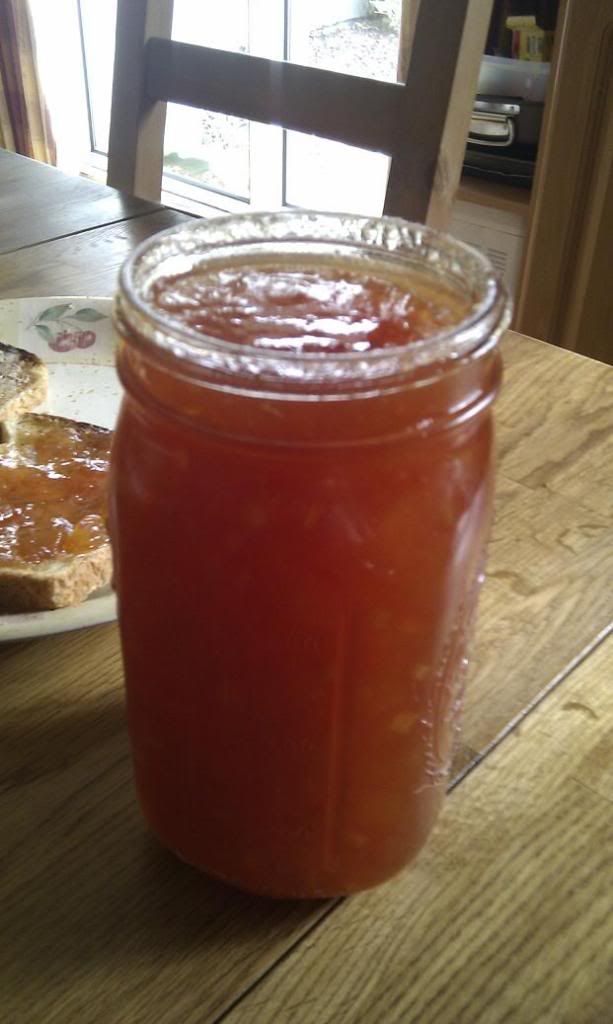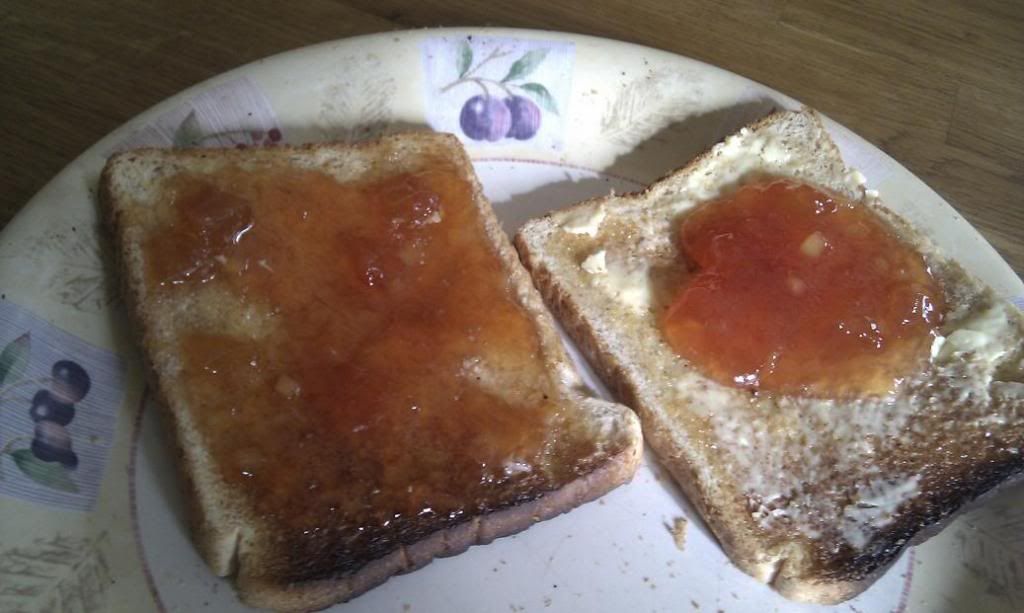Advertisement
If you have a new account but are having problems posting or verifying your account, please email us on hello@boards.ie for help. Thanks :)
Hello all! Please ensure that you are posting a new thread or question in the appropriate forum. The Feedback forum is overwhelmed with questions that are having to be moved elsewhere. If you need help to verify your account contact hello@boards.ie
Watermelon and ginger jam
Options
-
06-03-2012 5:10pm#1I was recently reminded of this family favourite that my mother used to make so I searched through some of her old recipe books and came across her annotated recipe in one of the books. I successfully made some jam over the weekend using it. I incorporated the notes that my mother had made to improve the recipe.
This recipe does not use the whole watermelon but uses most of the bits that are normally discarded. Be sure that you want to use the watermelon flesh the same day that you prepare it because, once sliced, it does not keep well. It can be served as slices for a dessert or can be used in a salad or fruit salad. I tried using some in Nigela Lawson's Watermelon, Feta And Black Olive Salad and we all enjoyed it thoroughly.
Ingredients:
Watermelon rind. The rind is the white flesh between the green skin and the reddish flesh. A 3 kg melon should yield between 1 and 1.5kg of rind.
Watermelon flesh from the ends. This flesh is normally discarded because it is not as sweet as the heart flesh.
Sugar (275 g per 500g of rind)
Ginger root (25g per 500g of rind)
Lemons (1 per 500g of rind)
Implements
Kitchen scales
Glass or plastic bowl that will fit into your refrigerator
Heavy bottomed cooking pot
Blender
Potato peeler or paring knife
Grater (to zest the lemons)
Jars with metal lids. 1 melon should produce 1 to 1.5 litres of jam
Method
Cut the watermelon in half through the point where the stem was attached and place on a chopping board flat side down. Cut 5 to 6 centimeteres (2.5 to 3 inches) off each of the ends. Using a spoon, scoop out the reddish flesh from the four end pieces into the blender. Set aside the scooped out end pieces for further preparation. Blend the flesh until liquified. The ends should yield about 200 - 300 ml of juice.
Cut the remainder of the watermelon into slices about 1 to 2 cm thick (half to 1 inch). Cut out the sweet hearts of the melon slices and set them aside to use fresh. They will not be used in the jam recipe.
Thinly peel all the rinds, including the previously set aside trimmed ends, with a potato peeler. Trim off (or scrape out with a dessert spoon) any remaining pink flesh from the rinds. Failure to remove the left over flesh will result in the chunks having the incorrect texture. They will be slightly slimy and squishy instead of crisp and crunchy. The removed fleshy bits will be discarded along with the peels.
Slice the rinds into cubes about 1 to 2 cm (half to one inch) in size and place on the scales to weigh them. Make a note of the weight and empty the chunks into the bowl.
Weigh out 50g of sugar per 500g of rind and add to the bowl. Weigh out 225g of sugar per 500g of rind and set aside for use in the final stages of cooking.
Zest the lemons into the bowl. Peel the lemons and cut the peel into small cubes as you would for marmalade. Place cubed lemon peel in a container of cold water and allow to soak overnight. This is to reduce the bitterness of the peel. Thinly slice the peeled lemons into the bowl. Do not attempt to remove any of the pith (the white layer under the skin) as this is a good source of pectin which is essential in jams to get them to set.
Weigh out 25g of peeled ginger root per 500g of rind and slice into small cubes, about the same size as the lemon peel or even smaller, and add to the bowl.
Add 50ml of the liquidised watermelon juice per 500g of rind. Stir the bowl contents to mix the ingredients. Cover with cling-film or seal with a lid and refrigerate overnight.
The next day, drain and rinse the lemon peel and add them to the cooking pot. Pour the refrigerated contents of the bowl into the pot and bring to the boil, stirring regularly. Once it starts to boil, reduce the heat and allow to a simmer, uncovered, until the melon is clear, about an hour and a half to two hours. Turn off the heat and allow contents to cool uncovered for an hour or two. Do not cover the pot as the excess water needs to evaporate.
Once cool, add the remaining sugar and bring back to the boil stirring regularly until setting point is reached (about 20-30 minutes). Setting point is reached when a teaspoonful of syrup dropped onto a chilled plate starts to set within 30 seconds. The surface should wrinkle and the syrup should stay in two parts if you drag your finger through it.
Allow to cool uncovered. When cool check the consistency. If it is still too runny then bring to the boil again and allow to cool.
When the proper consistency is reached place the jars and lids (do not seal the jars, leave the lids off) into an oven at 150 degrees C to heat them. Reheat the jam to boiling point. Pour the hot jam into the hot jars and seal the jars while the contents are still hot. This will help the jam to keep for months without spoiling.
Here's the finished result:
Enjoyed on toast this morning: 5
5
Advertisement